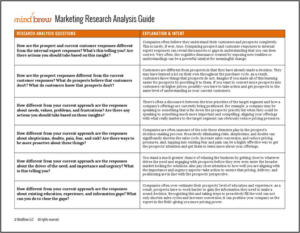Just a few years ago, marketing measurement and ROI were being talked about in the trades as though the concepts were new, innovative, and revolutionary. Never mind that direct marketers have been guided by performance measures and financial returns for more than century…doggone it, this was innovative! Something revolutionary! Something everyone should start doing, pronto!
Well, a lot of B2B marketers got the message. And thankfully, most of them got the right message. There are, however, some marketers who seem to have missed the point entirely.
You see, instead of measuring performance to determine what’s really working and what’s not…what’s worthy of greater investment and what needs to be scaled back or eliminated entirely…some marketers are using performance measures for all the wrong reasons.
In one case we’re familiar with, the marketing team absolutely loved tradeshows. They participated in dozens of them every year, with little time for anything else. Of course, participating in all of these shows involved traveling to exotic locations, staying in fancy hotels, and hosting lavish dinners and cocktail parties.
And many millions of dollars were spent before management demanded to see the ROI.
A few weeks later, management was presented with a sophisticated spreadsheet, reporting the financial benefits associated with each tradeshow, down to the penny. Some shows made a little bit of money, while other shows made a lot. And overall, the ROI was positive.
Later, however, it was discovered that the marketing team hadn’t even attempted to measure performance and returns until after management had asked to see the ROI. That was strike one.
Then, in the weeks after management’s demand for ROI data, the team had scrambled to pull something together…something that would prove that the tradeshows were worth the effort and investment. That was strike two.
Of course, to show the predetermined outcome, the tiny amount of real data that actually existed had to be augmented with bravo sierra like “anticipated future sales” and “long-term branding value”. Without these creative revenue augmentations, every single show was in the red, losing millions overall.
That was strike three…and they were out.
Smart B2B marketers measure performance to learn the truth about what’s working and what’s not. Smart B2B marketers feed the winners, starve the losers, and never fall in love with a particular marketing tactic. And smart marketers know that while a small amount of “puffery” will be tolerated in collateral materials, it has absolutely no place in financial reports.






